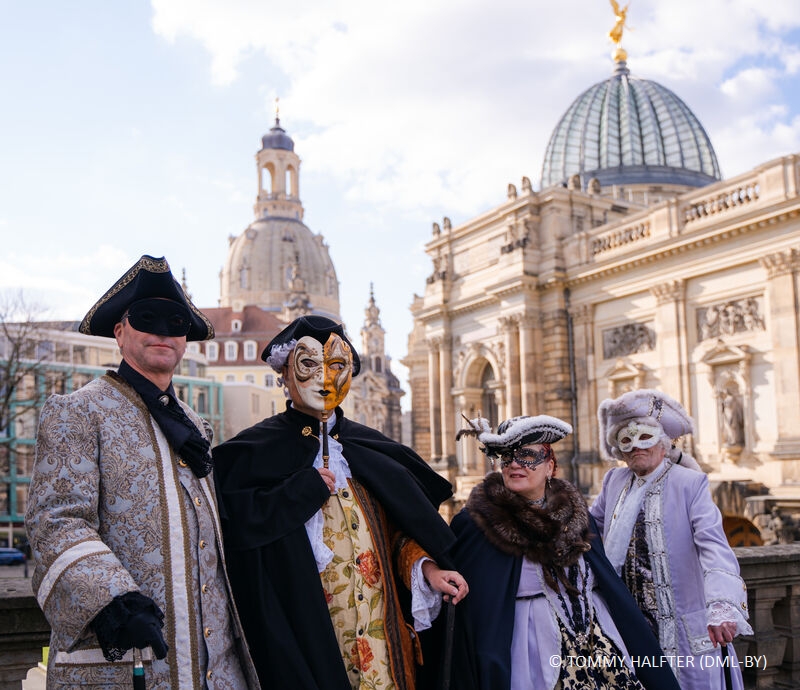Lust – Passion – Joy of Life
Revitalizing an 350 years old Tradition
“It is easy to see Dresden’s Venetian carnival becoming a major draw across Europe and beyond. It’s worth getting in before everyone else does,” writes the English Journalist Peter Ormerod after visiting its fourth edition in 2025.
In 2026, the Elbe Venetian Carnival will celebrate its 5th edition from February 13 to 15. Celebrate with us and be there when Dresden revives and reinterprets its almost 350-year-old tradition of the Italian carnival.
The focus of the program is a stroll in Venetian masks and robes through Dresden’s old town with dance performances on Saturday, February 14th (Valentine’s Day). The complete program including information about booking or reservation can be downloaded in a German Language Version PDF.
To get more impressions, please view our photos and videos on our Social Media Channels.

In 1553, Moritz of Saxony, the first Saxon elector at the Dresden court, celebrated a carnival. Also present were the Italian musicians he had hired for his cantorey, the forerunner of today’s Dresden State Orchestra, founded in 1549.
Moritz was also the first elector to travel to Venice. For his successors, the grand tour culminating in the carnival in Venice was one of the most important preparations for government office.
In 1677, the first records show that an “Italian carnival” was celebrated at the Dresden court.
In 1695, Augustus the Strong began his reign with a carnival. His festivals are legendary and have an impact far beyond Saxony, especially the Caroussel Comique in 1722, which merged Venetian, French and German festival culture. His idea was to tranform the Saxon residence into a “Venice on the Elbe” with the river als “Saxon Canale Grande”.
Under his successor, Augustus III. The way of celebrating the carnival is becoming more and more similar to the Italian model, not least because of the support of the Italian operas of his court conductor Johann Adolf Hasse.
Even after the end of the Augustan era, echoes of the Italian carnival tradition can be found. In 2022, this will be revived for the first time by Bernd Hoffmann as a link between the Dresden Baroque societies and other actors.